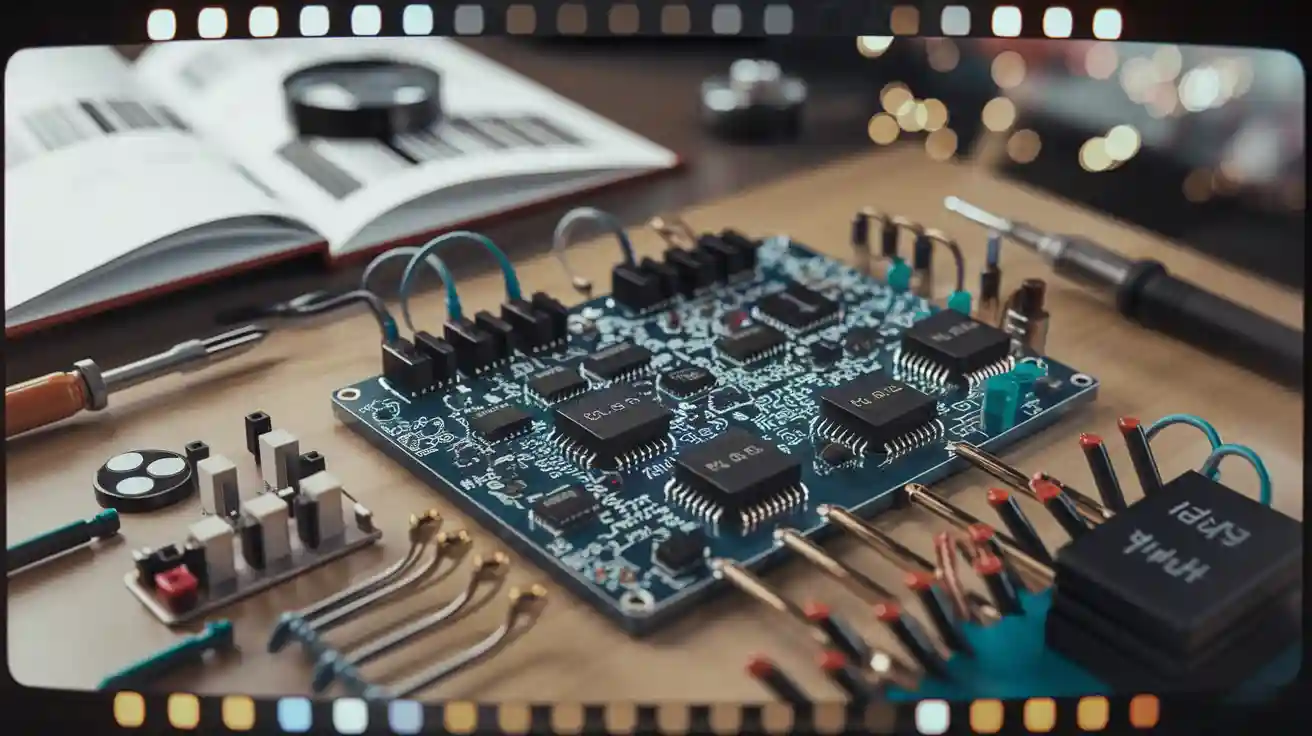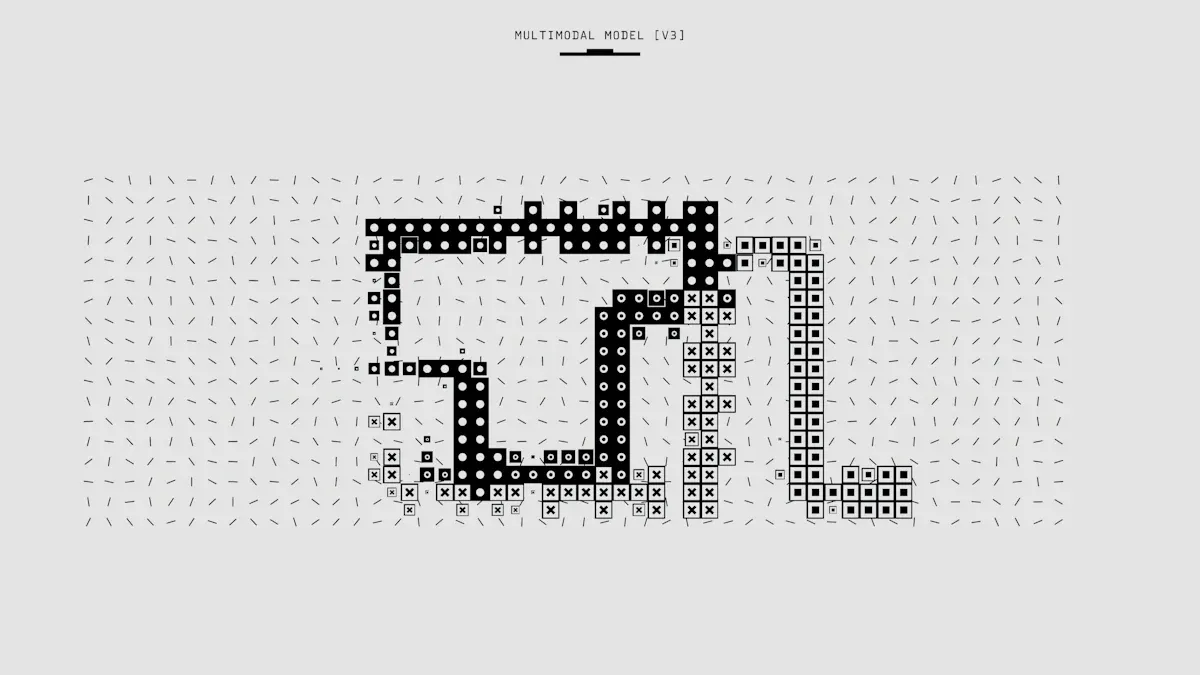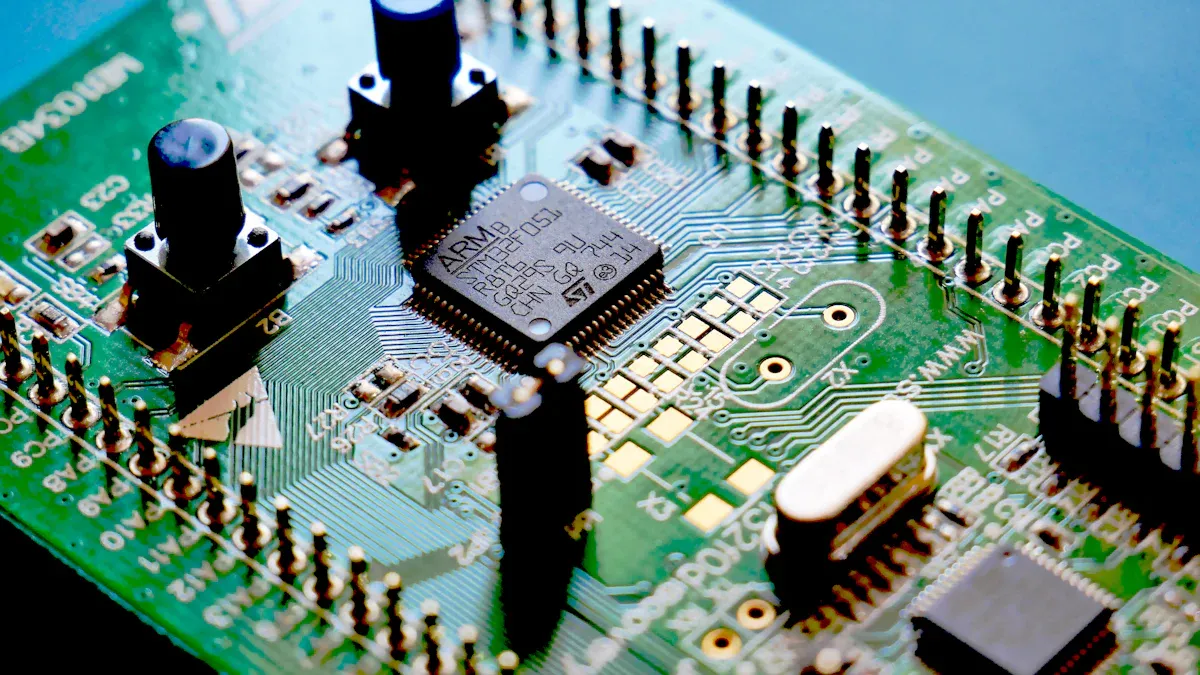Circuit Board Symbols Explained for Beginners
Understanding circuit board symbols is essential for anyone working with electronics. These symbols simplify complex designs, making it easier to analyze and troubleshoot circuits. They also save time by replacing lengthy descriptions with clear, standardized visuals. Since these symbols follow international standards, they enable effective communication across different languages and cultures.
Mastering these symbols builds your skills in designing, maintaining, and troubleshooting circuits, whether you’re a beginner or an experienced technician.
Key Takeaways
- Learning circuit board symbols is important for working with electronics. These symbols make designs easier and help people understand them worldwide.
- Knowing these symbols helps you design, fix, and study circuits better. Begin with easy diagrams and slowly move to harder ones.
- Standard symbols let you quickly find parts and their jobs in a circuit. This saves time for both new learners and skilled workers.
What Are Circuit Board Symbols?
Definition of Circuit Symbols
Circuit symbols are standardized graphical representations of electronic components used in schematic diagrams. These symbols simplify complex electrical designs by visually conveying the function and connection of each component. For example, a resistor is represented by a jagged line, while a capacitor is depicted as two parallel lines. These visual cues allow you to quickly identify components without needing detailed descriptions.
The use of circuit symbols is governed by international standards to ensure consistency and universal understanding. Standards like IEC 60617 and ANSI/IEEE 315-1975 define the shapes and meanings of these symbols. For instance, IEC 60617 provides a comprehensive library of graphical symbols for electrical diagrams, making it easier for engineers and hobbyists worldwide to interpret schematics accurately.
| Symbol Type | Description |
|---|---|
| Integrated Circuits (ICs) | Represented as rectangles, these symbols abstract complex functionalities into a simple box, indicating their role as miniaturized circuits. |
| Resistor | Depicted by jagged lines, this symbol indicates its function in controlling electrical current flow. |
| Capacitor | Shown as two parallel lines, it symbolizes energy storage and filtering capabilities in circuits. |
| Inductor | Represented by loops or coils, this symbol indicates energy storage in a magnetic field. |
| Transistor | Varies by type, typically includes a circle or rectangle with three legs, representing its semiconductor layers and terminals. |
| Battery | Shown with alternating long and short lines, indicating positive and negative terminals. |
| Power Supply | Similar to battery symbols, indicating the source of electrical energy. |
These symbols are essential for creating and interpreting schematic diagrams, which are the blueprints of electronic systems. By learning these symbols, you can better understand how circuits function and how components interact.
Purpose of Circuit Symbols
Circuit symbols serve several critical purposes in electronics. First, they enhance clarity by providing a universal language for circuit design. Whether you’re working on a simple project or a complex system, these symbols allow you to communicate ideas effectively with others, regardless of language barriers.
Second, circuit symbols improve efficiency in schematic interpretation. By using standardized symbols and reference designators, you can quickly identify components and understand their roles within a circuit. For example, a power supply symbol immediately indicates the source of electrical energy, while a transistor symbol shows its role in amplifying or switching signals.
| Aspect | Description |
|---|---|
| Component Identification | Use industry-standard symbols and reference designators to ensure universal understanding. |
| Signal Flow | Organize schematics logically to enhance intuitiveness in following the design. |
| Grid Alignment | Align components to a grid to maintain clarity and prevent chaos in the schematic. |
| Functional Grouping | Place related components close together for easier tracing and understanding of circuit interactions. |
Finally, circuit symbols simplify troubleshooting. When a circuit malfunctions, these symbols help you pinpoint the issue by tracing connections and identifying faulty components. For instance, if a resistor symbol appears in a problematic section of the circuit, you can test that component to determine if it needs replacement.
By mastering circuit symbols, you gain the ability to design, analyze, and troubleshoot electronic systems with confidence. This skill is invaluable for both beginners and experienced professionals in the field of electronics.
Common Circuit Symbols and Their Functions
Resistor Symbol
Resistors control the flow of electrical current in a circuit. Their symbol varies depending on the standard used.
- The zig-zag resistor symbol is widely recognized in the U.S. and aligns with IEC standards.
- The rectangular box symbol is preferred in IEEE/ANSI standards.
- Historical documents, such as the ANSI/IEEE 315-1975 standard, confirm that both symbols meet U.S. norms, with the zig-zag design recommended by IEC.
These variations highlight the importance of understanding common standards for electronic symbols when interpreting schematics.
Capacitor Symbol
Capacitors store and release electrical energy, playing a vital role in filtering and stabilizing circuits. Their symbol consists of two parallel lines, representing the plates of the capacitor.
| Symbol | Tolerance/Rating Description |
|---|---|
| 104K | Tolerance of ±10% |
| 25V | Maximum voltage of 25 volts |
When reading a printed circuit board, these numerical ratings help you identify the capacitor’s specifications and ensure compatibility with the circuit design.
Diode Symbol
Diodes allow current to flow in one direction while blocking it in the opposite direction. Their symbol features a triangle pointing toward a line, representing the direction of current flow. Diodes are essential for rectification and signal modulation in circuits.
Transistor Symbol
Transistors amplify or switch electrical signals. Their symbol varies by type, such as MOSFETs, BJTs, or JFETs, and includes three terminals: emitter, base, and collector.
Key parameters for selecting transistors include:
- Maximum collector current (Ic)
- Collector-emitter voltage (Vce)
- Current gain (hfe/ß)
- Switching time/frequency
Understanding these parameters ensures optimal performance in your printed circuit board designs.
Other Common Symbols
Other symbols frequently encountered include:
- Inductor: Represented by loops or coils, indicating energy storage in a magnetic field.
- Battery: Alternating long and short lines denote positive and negative terminals.
- Switch: A break in the line symbolizes its ability to open or close the circuit.
These symbols simplify circuit interpretation, enabling you to design and troubleshoot with confidence.
How to Read Circuit Boards Using Symbols
Simplifying Circuit Diagrams
Circuit board symbols play a crucial role in simplifying circuit diagrams. These symbols replace lengthy descriptions with concise visual representations, making schematics easier to interpret. For example, instead of describing a resistor’s function in words, a simple zig-zag line or rectangular box conveys its purpose instantly. This approach reduces clutter and enhances readability, especially in complex designs.
When you learn how to read schematics, you can quickly identify components and their connections. This skill allows you to focus on understanding the circuit’s functionality rather than deciphering its layout. For instance, a capacitor symbol immediately tells you it stores and releases energy, while a diode symbol indicates the direction of current flow. By mastering these symbols, you can break down even the most intricate circuit diagrams into manageable sections.
Tip: Start with simple schematics to familiarize yourself with basic symbols. Gradually progress to more complex designs as your confidence grows.
Universal Understanding Through Standardization
Circuit board symbols follow international standards, ensuring universal understanding across different regions and industries. Standards like IEC 60617 and ANSI/IEEE 315-1975 define these symbols, making them consistent and recognizable worldwide. This standardization eliminates confusion and fosters effective communication among engineers, technicians, and hobbyists.
For example, whether you’re working on a project in the United States or collaborating with a team in Europe, the symbols for resistors, capacitors, and transistors remain the same. This consistency allows you to interpret schematics accurately, regardless of the designer’s location. It also ensures that manufacturers can produce circuit boards that meet global requirements.
Note: Familiarizing yourself with these standards not only improves your ability to read schematics but also enhances your credibility as an electronics professional.
Troubleshooting with Circuit Symbols
Circuit board symbols are invaluable tools for troubleshooting. They help you pinpoint issues by providing a clear map of the circuit’s layout and functionality. When a circuit malfunctions, you can trace the connections using the symbols to identify faulty components or wiring errors.
Engineers often rely on single-line diagrams (SLDs) to diagnose problems in power systems. These diagrams use standardized symbols to model the system’s behavior and locate faults. For instance:
- Power System Analysis: SLDs help engineers identify issues like overloaded transformers.
- Power System Troubleshooting: SLDs allow engineers to quickly locate faults, such as tripped circuit breakers, enabling faster resolution.
In smaller circuits, symbols for components like resistors, diodes, and transistors guide you in testing and replacing defective parts. For example, if a resistor symbol appears in a problematic section, you can measure its resistance to determine if it needs replacement. This systematic approach saves time and ensures accurate repairs.
Pro Tip: Keep a reference chart of common circuit board symbols handy while troubleshooting. It can serve as a quick guide and boost your efficiency.
Mastering circuit board symbols is a fundamental skill for anyone working with electronics. These symbols help you interpret and design circuits with precision. Start by practicing with basic schematics to build confidence. Gradually, challenge yourself with more intricate circuit designs to deepen your understanding and enhance your expertise.
FAQ
What is the best way to memorize circuit board symbols?
Use flashcards with symbols and their meanings. Practice with simple schematics to reinforce your understanding. Gradually work on more complex diagrams.
Are circuit board symbols the same worldwide?
Yes, most symbols follow international standards like IEC 60617 and ANSI/IEEE 315-1975. This ensures consistency and universal recognition across regions.
Can I design circuits without knowing the symbols?
No, understanding symbols is essential for creating accurate schematics. Without them, you cannot effectively communicate your design or troubleshoot issues.






















